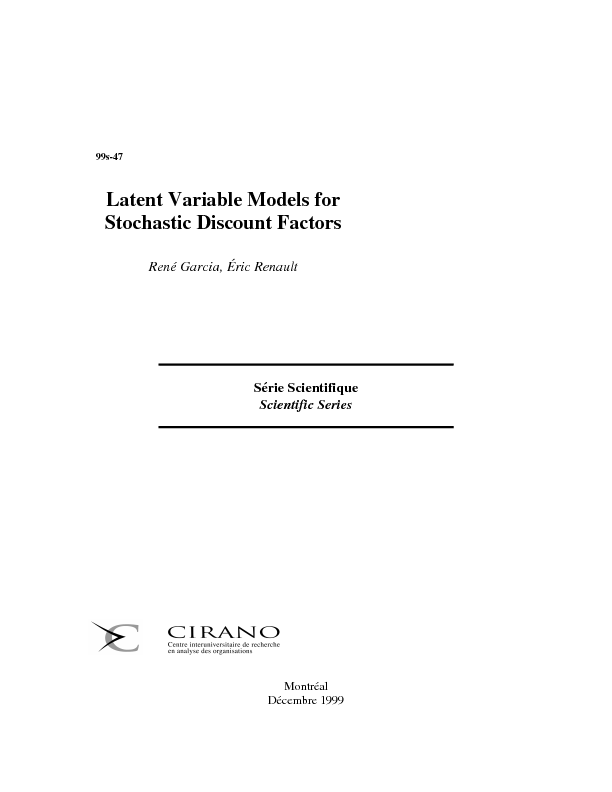Latent Variable Models for Stochastic Discount Factors
Latent variable models in finance originate both from asset pricing theory and time series analysis. These two strands of literature appeal to two different concepts of latent structures, which are both useful to reduce the dimension of a statistical model specified for a multivariate time series of asset prices. In the CAPM or APT beta pricing models, the dimension reduction is cross-sectional in nature, while in time-series state-space models, dimension is reduced longitudinally by assuming conditional independence between consecutive returns given a small number of state variables. In this chapter, we use the concept of Stochastic Discount Factor (SDF) or pricing kernel as a unifying principle to integrate these two concepts of latent variables. Beta pricing relations amount to characterize the factors as a basis of a vectorial space for the SDF. The coefficients of the SDF with respect to the factors are specified as deterministic functions of some state variables which summarize their dynamics. In beta pricing models, it is often said that only the factorial risk is compensated since the remaining idiosyncratic risk is diversifiable. Implicitly, this argument can be interpreted as a conditional cross-sectional factor structure, that is a conditional independence between contemporaneous returns of a large number of assets given a small number of factors, like in standard Factor Analysis. We provide this unifying analysis in the context of conditional equilibrium beta pricing as well as asset pricing with stochastic volatility, stochastic interest rates and other state variables. We address the general issue of econometric specifications of dynamic asset pricing models, which cover the modern literature on conditionally heteroskedastic factor models as well as equilibrium-based asset pricing models with an intertemporal specification of preferences and market fundamentals. We interpret various instantaneous causality relationships between state variables and market fundamentals as leverage effects and discuss their central role relative to the validity of standard CAPM-like stock pricing and preference-free option pricing.
[ - ]




